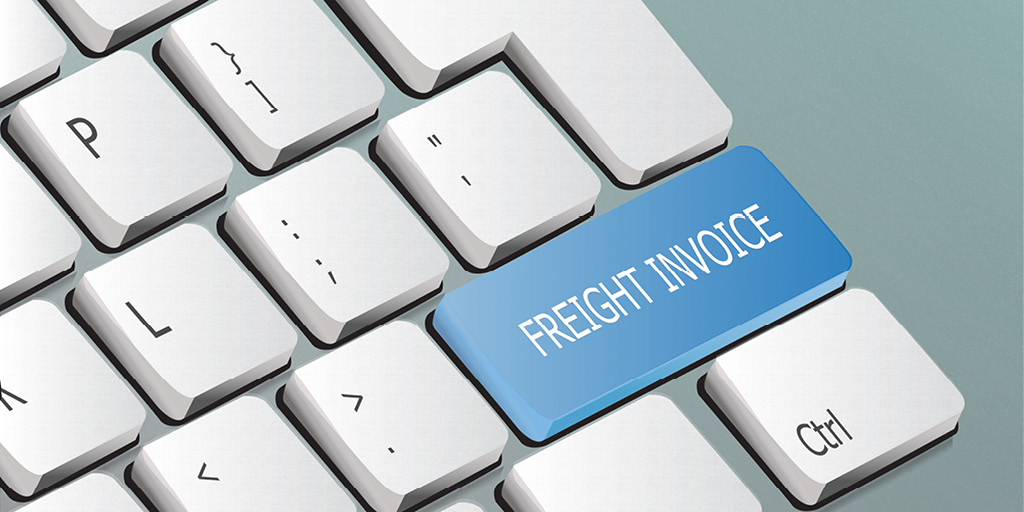Freight invoice settlement and processing is complex, expensive and prone to errors.
Up to 6% of freight invoices are processed with errors, according to Gia Glad of Global Trade Magazine.
To reduce the time and expense lost to such errors, modern supply-chain leaders leverage technology to automate manual processes in back-office operations. Automating freight settlement processing enables faster, more accurate and more profitable freight settlements.
The Freight Invoice Settlement Process Is Complex
Processing freight invoices is more than matching a bill of lading and invoice to other paperwork.
As reported in Global Trade, “managing invoices is extremely hard as a lot of challenges like reconciling contract terms with Bill Of Lading (BOL), invoices’ rating for correct rate selection, decisions about the acceptance of differences in charges, getting invoices re-submitted after making the carriers do corrections, etc. have to be dealt with extreme care.
“When these challenges are not addressed properly, they lead to errors, which further lead to overcharging, eventually adding to the overall Invoice Processing complexity.”
The High Labor Cost of Manual Freight Invoice Processing
Consider the full picture surrounding a transaction: assessorial charges, peak season surcharges, and after-the-fact assessments. These all contribute to a higher invoiced amount than initially agreed.
In many cases these charges are accurate, but your accounts payable team needs to take time to manually compare the expected invoice amount with the actual invoice amount for each carrier invoice they receive. If accessorial charges are on the invoice, your team must then work with the carrier to get accurate documentation and track these requests with all of the different invoices and carriers they are working with. Once they receive the documentation, they need to upload them to the TMS. All of these touchpoints add days to the invoice settlement process.
On average, a human being can process 75 invoices per day which is roughly 19,000 invoices per year. At a fully-loaded $20 / hour, you pay about $41,000 to process 19,000 invoices. That translates to $2.16 in labor costs for every invoice you process. If your company processes 100,000 loads per year, you pay $216,000 annually in back-office labor costs.
Mistakes Happen When Freight Invoices Are Settled Manually
The inherent complexity of processing freight invoices manually results in mistakes. One of our customers recently told me that before automating their back office, they had to routinely rework up to 20% of their loads. Your team might not be making that many mistakes, but rework caused by mistakes is a significant issue that erodes your business.
Freight Invoice Processing Mistakes Are Expensive
Automation Creates Faster, More Accurate Freight Invoice Settlement
A typical automated freight invoice settlement process looks like this:
- The carrier emails a freight invoice and supporting documentation to your accounts payable team.
- The automation platform
- Ingests the email and documentation.
- Identifies the carrier, document types, load (or loads.)
- Matches this information to the transportation management system.
- Confirms the carrier provided customer-specific required documents and references.
- Alerts the accounts payable team if anything is missing or doesn’t match what is expected
If everything meets customer requirements, the accounts payable team simply settles the load in the TMS. At a minimum, automating this process allows your team to focus on freight invoices that are incorrect and don’t match the freight tender.
Best Practices to Automate the Manual Freight Invoice Settlement Process
Leading 3PLs are definitely investing in technology and software. Freight auditing software and automation technologies alone can’t automate bad processes.
Sometimes, 3PLs find themselves less efficient because they deployed the wrong technology or attempted to automate archaic, manual processes. Look at your processes and identify what needs to be changed, automated, or discarded.
- Process map your back-office work to identify what can be improved. Understand that you can’t automate a lousy process, and be prepared to change what is broken.
- Track back-office productivity KPIs on a monthly basis to ensure your improvements have the desired effect.
- Talk to your team to understand sources of friction and inefficiency. Document their recommendations and begin the change management process by making them a part of the improvement initiative to automate some of their work.
- Use analytics to identify trends in errors among carriers. Understanding these will help you determine which carriers will require more work from your accounts payable team.
- Set goals. Can you get your payables team from 75 invoices per person per day to 300? Can you shift your receivables team from auditing and fixing customer invoices to focusing on collections and customer satisfaction?


